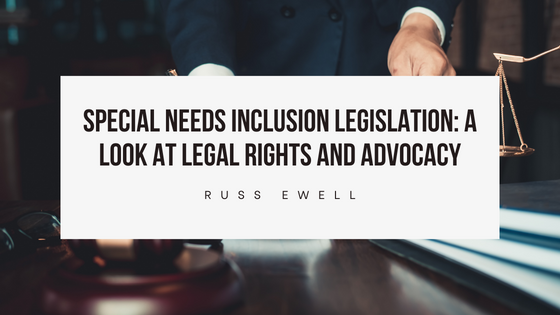In today’s society, the importance of inclusion for individuals with special needs cannot be overstated. It is a fundamental human right that every person, regardless of their abilities or disabilities, should have the opportunity to participate in all aspects of life, from education to employment and beyond. In this blog, explore the legal rights and advocacy efforts that have shaped special needs inclusion legislation, ensuring that individuals with disabilities are given the opportunities they deserve.
Historical Perspective
The journey towards inclusive education and equal rights for individuals with special needs has been marked by significant milestones. One of the most notable is the Individuals with Disabilities Education Act (IDEA), which was first passed in 1975. IDEA established the legal framework for providing children with disabilities a free and appropriate public education. The law recognizes the importance of individualized education plans (IEPs) and the provision of related services to help children with disabilities succeed in school.
Legal Rights and Protections
IDEA is just one piece of the puzzle. Several other laws and regulations at both the federal and state levels provide protection and support for individuals with special needs. The Americans with Disabilities Act (ADA), for instance, prohibits discrimination on the basis of disability, ensuring equal access to public facilities, transportation, and employment opportunities. Section 504 of the Rehabilitation Act of 1973 also prohibits discrimination on the basis of disability in federally funded programs and activities.
Furthermore, the Every Student Succeeds Act (ESSA) and the Elementary and Secondary Education Act (ESEA) work in conjunction with IDEA to promote inclusive education practices. These laws ensure that students with disabilities are included in statewide assessments and that schools are held accountable for their progress.
Advocacy and the Role of Parents
While legal frameworks are crucial, advocacy efforts from parents, caregivers, and advocacy organizations have been instrumental in advancing the rights of individuals with special needs. Parents often play a vital role in advocating for their children’s needs and ensuring that they receive appropriate support and services. Parent-teacher organizations and special education advocacy groups also serve as valuable resources for information and support.
In recent years, the disability rights movement has gained significant momentum, promoting awareness and fighting for the rights of individuals with disabilities. Activists have worked tirelessly to change societal attitudes and break down barriers that impede inclusion and equal opportunities.
Challenges and Ongoing Work
Despite the progress made, challenges remain. Disparities in educational outcomes and employment opportunities persist for individuals with disabilities. Inadequate funding, teacher training, and resources can hinder the implementation of inclusive practices in schools. Advocacy and legislative efforts continue to address these issues, pushing for more equitable and accessible systems.
Inclusion legislation has come a long way in ensuring that individuals with special needs have the legal rights and support they need to thrive in various aspects of life. While significant progress has been made, there is still much work to be done in breaking down barriers, promoting awareness, and advocating for equal opportunities. The journey towards full inclusion is ongoing, and it requires the collective efforts of lawmakers, educators, parents, and advocates to create a society where every individual, regardless of their abilities, can participate and succeed.

